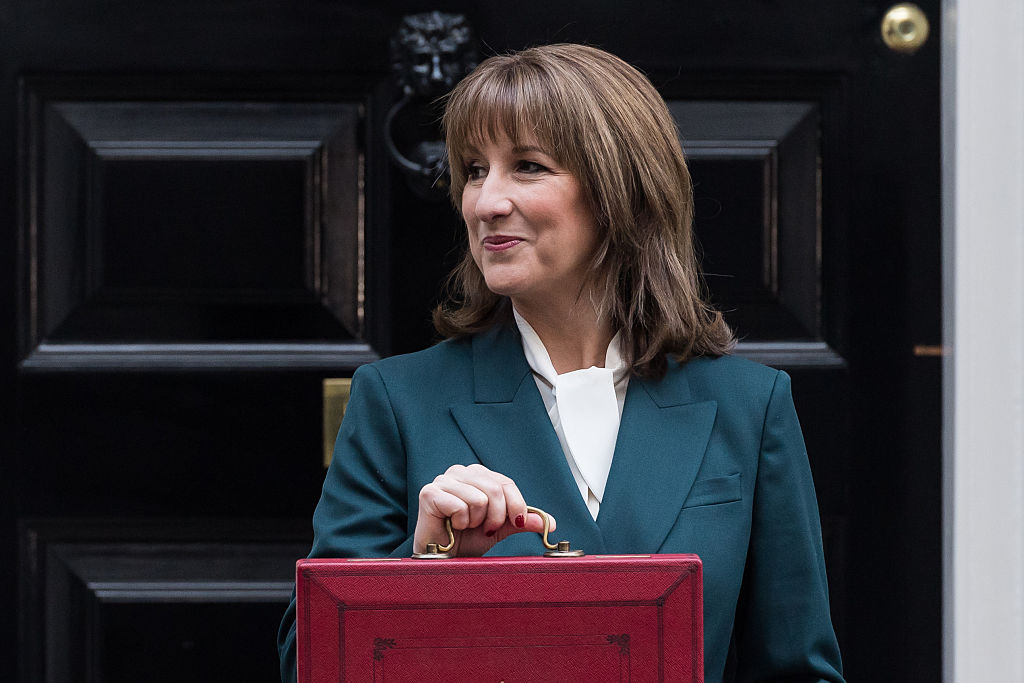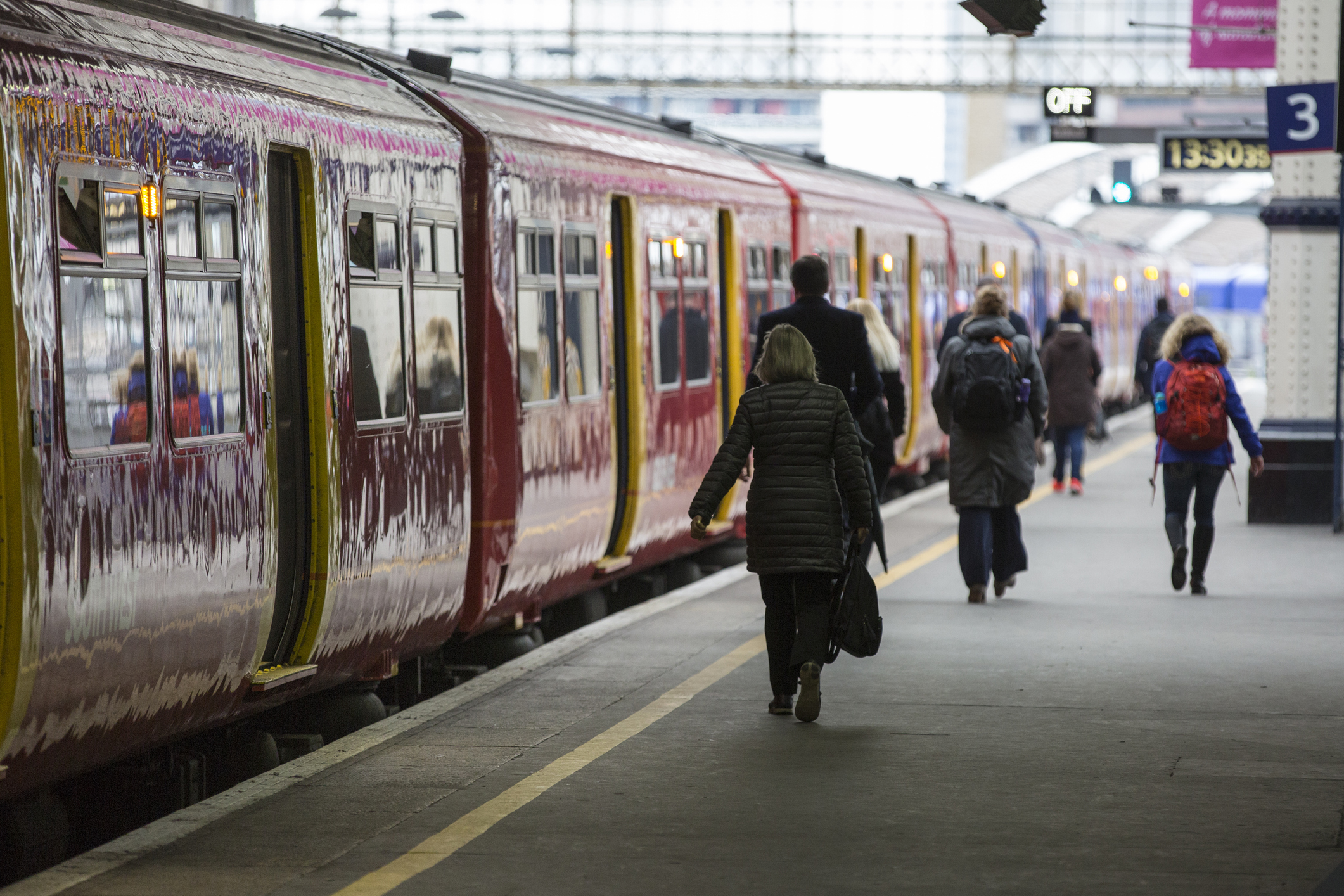Hundreds of thousands more taxpayers to be pulled into £100k ‘tax trap’ by 2029
Frozen thresholds are pushing more workers into paying income tax at an effective 60% rate. We look at why, as well as how you can avoid being caught in the trap.


Hundreds of thousands of Brits are set to be dragged into an effective 60% tax trap over the next four years, according to new figures.
Almost 2.3 million taxpayers will earn over £100,000 by 2028/29, based on Freedom of Information (FOI) data obtained from the HMRC by wealth and asset management firm Rathbones, leaving them exposed to the tax trap.
The top rate of income tax in England, Wales and Northern Ireland is 45%. However, the tax-free personal allowance gradually reduces once you earn over £100,000. You lose it completely if you earn £125,140 or more.
MoneyWeek
Subscribe to MoneyWeek today and get your first six magazine issues absolutely FREE

Sign up to Money Morning
Don't miss the latest investment and personal finances news, market analysis, plus money-saving tips with our free twice-daily newsletter
Don't miss the latest investment and personal finances news, market analysis, plus money-saving tips with our free twice-daily newsletter
This means, if you earn between £100,000 and £125,140, you effectively pay an income tax rate of 60%.
HMRC estimates 1.8 million taxpayers earned above the £100,000 threshold in 2024/25, but this is expected to rise by 493,000 to 2.29 million by 2028/29.
Not only does breaching £100,000 in earnings lead to an effective 60% rate of tax on income between £100,000 and £125,140, it means families can lose out on vital childcare support worth tens of thousands of pounds.
Stephanie Ebner, a financial planning lead at Rathbones, said the £100k tax trap had increasingly become a “stealth tax on the middle class”.
“The £100,000 tax trap is one of the most baffling quirks in our tax system,” she added.
“Originally designed to target the very highest earners, after 15 years of inflation and frozen thresholds, it now ensnares thousands of professionals who were never meant to be caught.”
For parents with two children under five, earning just £1 over £100,000 can mean losing childcare support worth almost £20,000, Rathbones warns.
All entitlement to tax-free childcare and free childcare hours is lost once parents earn more than £100,000 a year.
Stephanie said: “These costs must be covered from post-tax income, so it’s no surprise many are concerned.
“Hard-working families would need a substantial pay rise just to offset the impact of this tax trap.”
| Number of taxpayers (thousands) | |||||||
Income Range | 2021-22 | 2022-23 | 2023-24 | 2024-25 | 2025-26 | 2026-27 | 2027-28 | 2028-29 |
£90,000 - £100,000 | 334 | 379 | 401 | 457 | 482 | 503 | 522 | 541 |
£100,001 - £110,000 | 216 | 247 | 299 | 333 | 355 | 374 | 389 | 413 |
£110,001 - £120,000 | 154 | 174 | 236 | 266 | 295 | 288 | 300 | 309 |
£120,000+ | 848 | 945 | 1,090 | 1,200 | 1,300 | 1,400 | 1,480 | 1,570 |
Total of £100k+ earners | 1,218 | 1,366 | 1,625 | 1,799 | 1,950 | 2,062 | 2,169 | 2,292 |
Source: HMRC via Freedom of Information request November 2025. Figures for the 2023-24 to 2028-29 tax years are estimates.
What is the £100k tax trap?
The £100k tax trap, also known as the 60% tax trap, is where taxpayers earning between £100,000 and £125,140 pay an effective income tax rate of 60%.
This is because your personal allowance, worth £12,570, is tapered off until eventually you have none left. This means being hit with extra tax on top of the 40% marginal rate.
The allowance tapers down at a rate of £1 for every £2 worth of income earned above £100,000.
For example, if your income rose to £110,000 from £100,000 you would pay 40% income tax on the additional £10,000 over £100,000. This works out at £4,000 in tax.
You would also lose £5,000 of your personal allowance (50% of £10,000) which is taxed at 40%. This equates to £2,000 in tax.
It means you pay £6,000 (60%) tax on the £10,000 earned over £100,000.
You pay the 45% additional rate of income tax on anything earned over £125,140.
Fiscal drag pulls more taxpayers into the 60% tax trap
The £100,000 threshold for losing the personal allowance has been frozen since its introduction in April 2010. Income tax thresholds have also stayed the same since April 2021 and remain frozen until April 2028.
But with taxpayers seeing their incomes increase due to rising wages and inflation, more and more people are being pulled into higher tax thresholds – a phenomenon known as fiscal drag.
The number of people losing some or all of their personal allowance due to fiscal drag is projected to rise by 88% between 2021/22 and 2028/29, from 1.22 million to 2.29 million, according to HMRC estimates.
Can you avoid the 60% tax trap?
Put simply, yes. You could give up a portion of your salary, if you’re still working, and add it into a workplace pension, thereby reducing your annual pay.
Sarah Coles, head of personal finance at Hargreaves Lansdown, said: “Check if your employer operates a salary sacrifice scheme, where you give up a portion of your salary, and spend it on certain things free of tax – including pensions. You can use this to bring your salary down below the £100,000 threshold.
“If your employer doesn’t run a salary sacrifice scheme, or the Budget brings in changes that make it harder to take advantage, you can still pay into a self-invested personal pension (SIPP) and receive tax relief at your highest marginal rate.”
Coles highlighted how someone on £101,000 paying £1,000 into a pension would benefit from £400 tax relief and an extra £200 boost as their personal allowance wouldn’t start being tapered down, meaning a £1,000 contribution would only actually cost them £400.
She added: “Plus, if a parent can bring their income back under £100,000, they may keep their eligibility to tax-free childcare too.
“If you’re making income from savings interest, you can use a cash ISA to protect as much as possible from tax.”
That said, there have been speculations the chancellor Rachel Reeves could introduce a £2,000 cap on the amount of earnings that can be exchanged through salary sacrifice in the Autumn Budget, signalling bad news for those trying to avoid the £100k tax trap.
Get the latest financial news, insights and expert analysis from our award-winning MoneyWeek team, to help you understand what really matters when it comes to your finances.

Sam has a background in personal finance writing, having spent more than three years working on the money desk at The Sun.
He has a particular interest and experience covering the housing market, savings and policy.
Sam believes in making personal finance subjects accessible to all, so people can make better decisions with their money.
He studied Hispanic Studies at the University of Nottingham, graduating in 2015.
Outside of work, Sam enjoys reading, cooking, travelling and taking part in the occasional park run!
-
 RICS: Budget failed to boost property market and recovery unlikely until spring 2026
RICS: Budget failed to boost property market and recovery unlikely until spring 2026Data from the Royal Institution of Chartered Surveyors suggests the Autumn Budget hasn't helped to improve property market sentiment
-
 FCA launching targeted support to help savers with complex financial decisions
FCA launching targeted support to help savers with complex financial decisionsThe regulator wants to help you get to grips with investing and pension planning. Here’s how its new targeted support framework will help you
-
 The consequences of the Autumn Budget – and what it means for the UK economy
The consequences of the Autumn Budget – and what it means for the UK economyOpinion A directionless and floundering government has ducked the hard choices at the Autumn Budget, says Simon Wilson
-
 Why UK stocks are set to boom
Why UK stocks are set to boomOpinion Despite Labour, there is scope for UK stocks to make more gains in the years ahead, says Max King
-
 Electric vehicle drivers to be charged new per mile tax from 2028
Electric vehicle drivers to be charged new per mile tax from 2028Electric vehicle drivers will be forced to pay a 3p per mile tax, as taxation will be brought closer in line with petrol and diesel cars
-
 Salary sacrifice cap of £2,000 to be introduced in 2029
Salary sacrifice cap of £2,000 to be introduced in 2029The government says 74% of basic rate taxpayers currently using salary sacrifice will be unaffected by the change
-
 Savers will have to wait as long as 48 years to build a £1m cash ISA pot if allowance is cut
Savers will have to wait as long as 48 years to build a £1m cash ISA pot if allowance is cutChancellor Rachel Reeves is rumoured to be planning a cut to the cash ISA allowance in the Autumn Budget, making it harder for savers to build wealth. Will you still be able to build a £1 million cash ISA pot?
-
 Autumn Budget live: Rachel Reeves cuts cash ISA limit, introduces mansion tax and more
Autumn Budget live: Rachel Reeves cuts cash ISA limit, introduces mansion tax and moreLive updates Chancellor Rachel Reeves unveiled a slew of tax hikes and ISA reforms in her second Autumn Budget. We take a look at the latest updates and analysis
-
 Rail fares to be frozen for first time in 30 years – how much could you save?
Rail fares to be frozen for first time in 30 years – how much could you save?Chancellor Rachel Reeves will use her Budget to freeze rail fares but the savings could be offset by tax rises
-
 Should ISA investors be forced to hold UK shares?
Should ISA investors be forced to hold UK shares?The UK government would like ISA investors to hold more UK stocks – but many of us are already overexposed